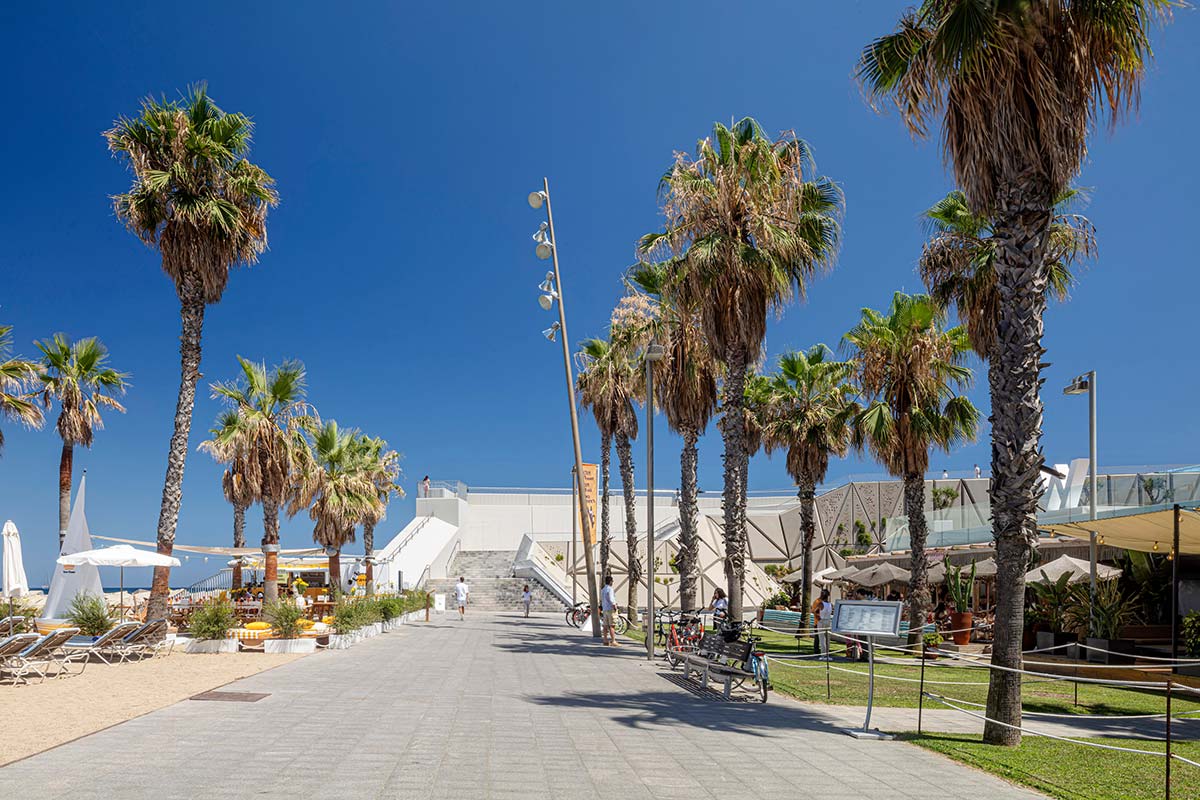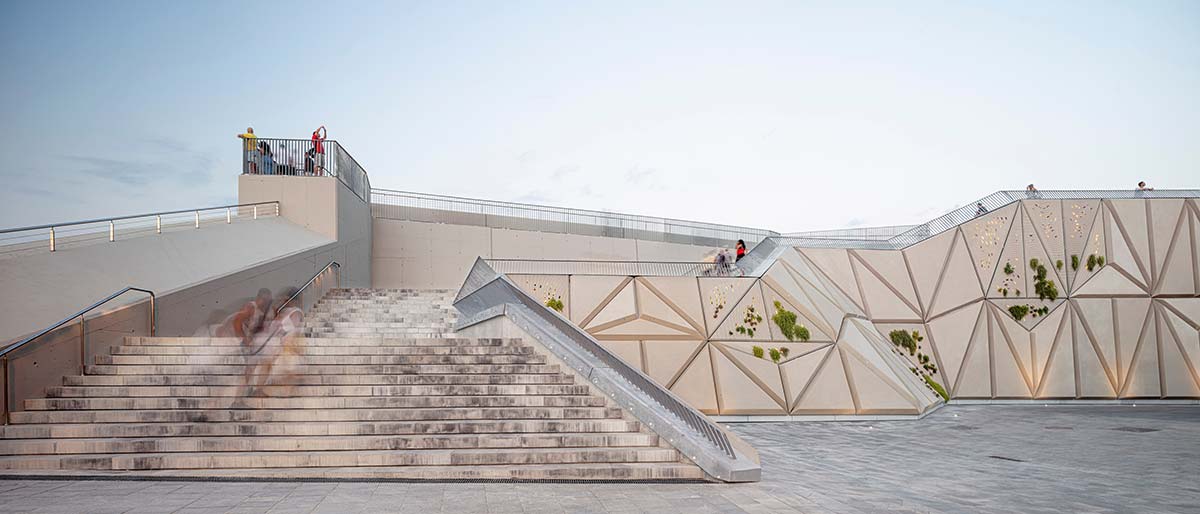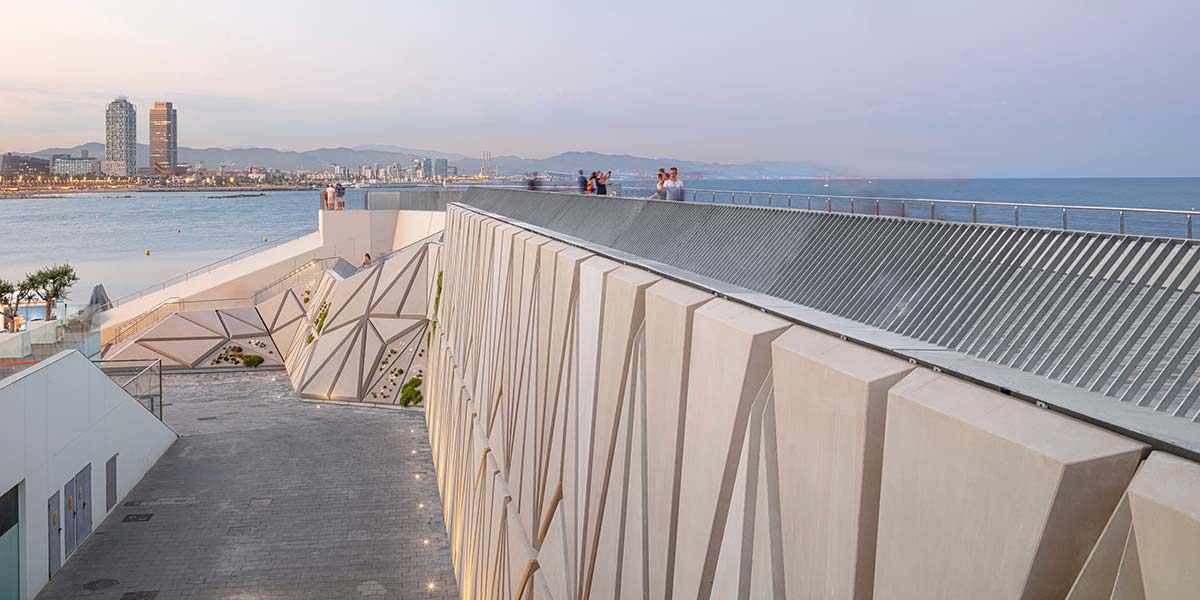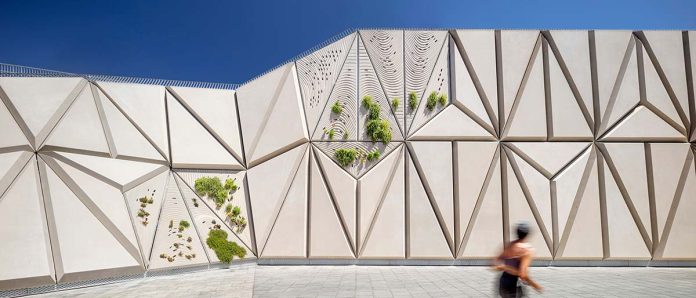The design of a city’s perimeter can make or break its identity, value, and image. The neighborhood of Barceloneta is distinctive for its position and role as Barcelona’s historic waterfront and port area. It now also features the Escaleras y Mirador Vela, a walkable architectonic facade. Connecting the Passeig del Mare Nostrum with the Plaça de la Rosa dels Vents, the structure has dramatically changed the public area around the W Hotel where powerful tides coexist with a high concentration of people engaged in outdoor activities.

Part of the Port of Barcelona Board of Directors’ Nova Bocana Special Plan, the project comprises a sculpture with two walls – the existing dam and the new promenade facade wall – a new seaside urban space with views of the Mediterranean and the city. The urban project was both “inevitable” and “representative… an essential reconfiguration of the city’s relationship with the sea,” as External Reference architect Carmelo Zappulla explains.

The firm linked the stairs and the Vela walkway with “a geological structure whose shapes are inspired by the salt crystals that form in the small water basins of the Mediterranean, captured by the irregularities and collisions of sea rocks. The stairs ‘crystallize’ in the corner where Barcelona’s coastal promenade intersects with the monumental dam that protects it from the force of the Mediterranean tides.”

The new, 48.45-meter-long promenade built in prefabricated concrete is reached by a staircase of 48 steps, which make up for the 8.5-meter height difference.

The new facade is covered with triangular bioreceptive concrete panels outfitted with low-maintenance native plants that will thrive here (Lobularia Maritima, Lampranthus Spectabilis, and Drosanthemum Floribundum) and fiber-optic lighting that makes the surface seem to vibrate at sunset.

Client: Nova Bocana
Main Contractor: Construcia
Project Management: Pigra engineering
Civil Engineers: Josep Lluis Blanch, Pigra engineering
Photo credits: Adrià Goula







